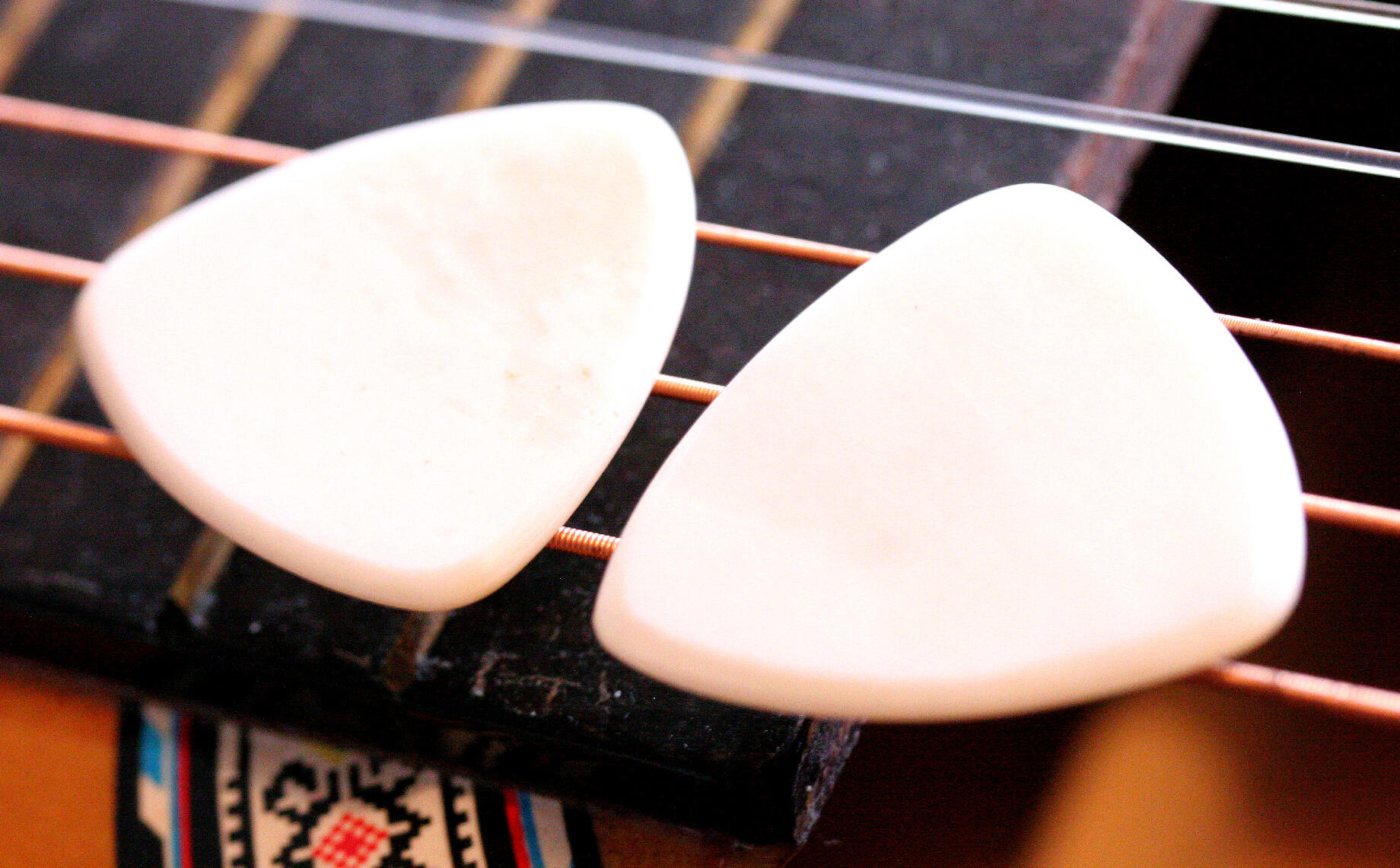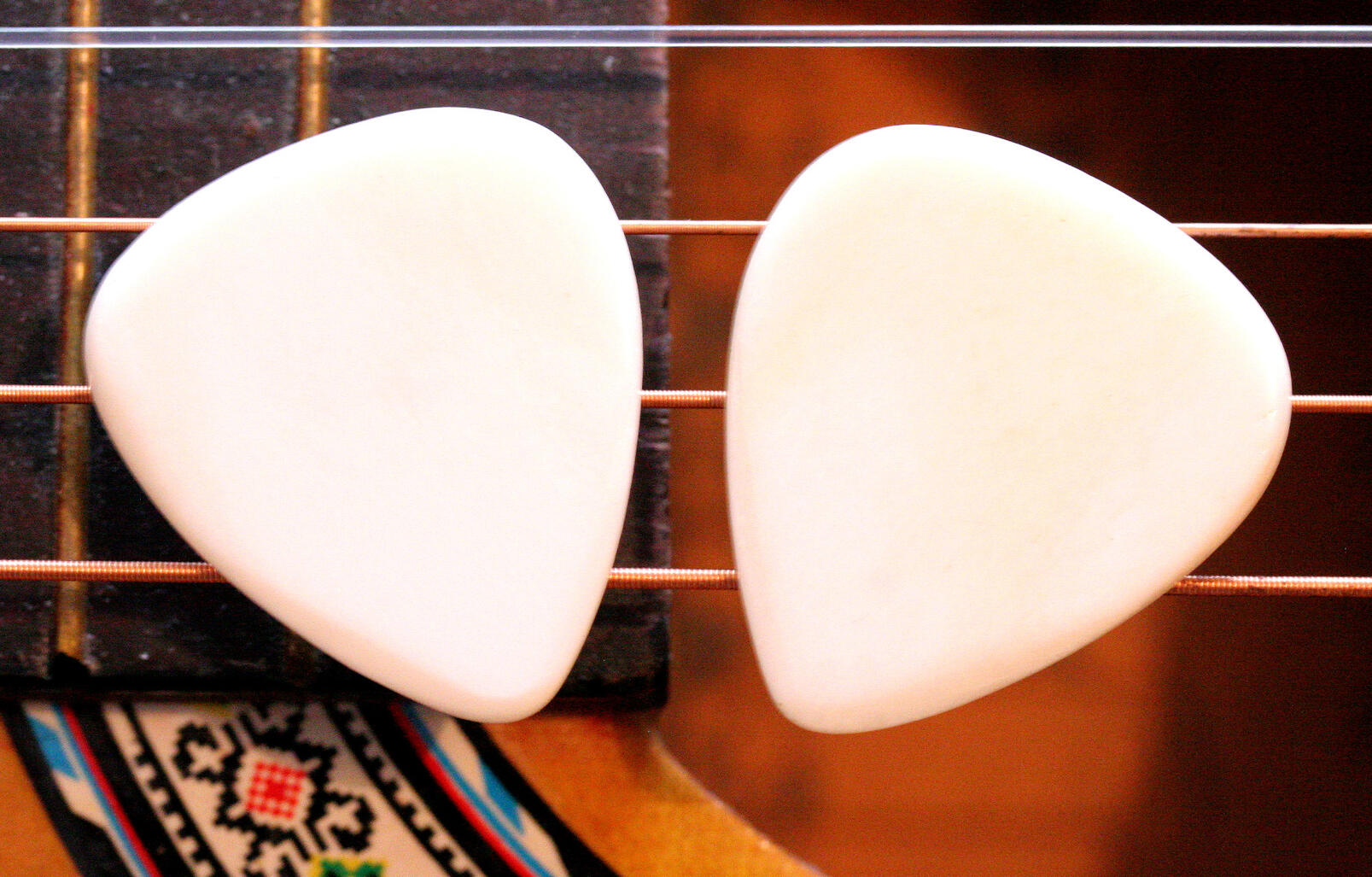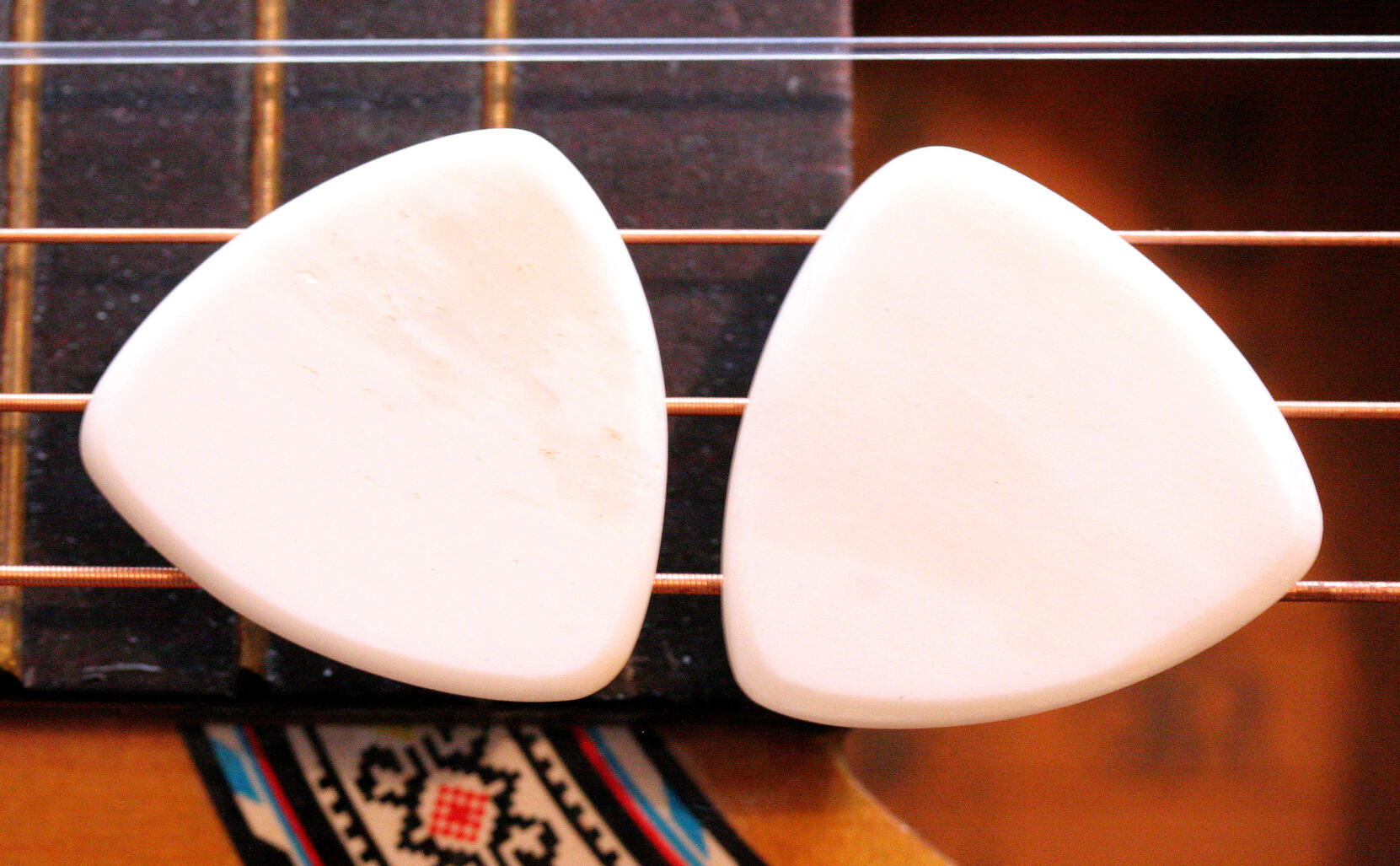BONE GUITAR PICKS
Plectrums, also known as picks, have been around as long as stringed instruments themselves. Ancient musicians regularly used animal bone plectrums to increase volume and brighten the tonality of stringed instruments such as the Oud, Shamisen, Bouzouki, Doshpuluur, Guqin, and many other folk instruments of antiquity.
Contemporary bone picks are handcrafted by picksmiths and are prized by acoustic and electric guitarists, bassists and mandolinists for their unique tonal palette and increased volume. Picksmiths regularly use bone from buffalo, deer, swine, turtle and other large animals to create their handcrafted plectrums.
BONE PICK STYLES
351 (contemporary)
The "351" pick shape gained popularity in the 1970's-1980's when mass-manufactured plastic guitar picks became standardized; the 351 shape is still the most manufactured guitar pick shape today. Guitarists seem to favor the common 351 design for its versatility, and the pick normally features a variety of tip styles (i.e. precision, standard, rhythm, etc.).
The bone 351 style guitar pick is most favored by acoustic players for its increased volume, as well as more rhythmic musical styles such as blues and rock electric guitar and bass. The material itself is lightweight and durable, and formats easily to the standardized 351 shaping.
Triangular (traditional)
Originally popular with folk and bluegrass instrumentalists for its rounded stylization, the triangular shape was an evolutionary deviation of the early "button" style plectrums of the 1800's - early 1900's. The triangular shape features three augmented pick points, yet provides three gentle arcs for a more rhythmic application.
The bone pick triangular shaping is still popular with acoustic folk and bluegrass instrumentalists today, as well as rhythm players and electric bassists.


